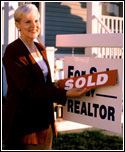 If you’re planning to buy a home in Spruce Grove, Stony Plain, Parkland County, the Edmonton region, or elsewhere in Alberta using the services of a REALTOR®, expect to be asked to sign several documents during the process. You already know, if you’ve bought property in the past, that your Offer to Purchase states the price you are willing to pay, any conditions on the offer, and the date on which you’d like to take possession of the home. You’re also asked to provide proof of your identity and probably your financial ability to enter into a purchase agreement.
If you’re planning to buy a home in Spruce Grove, Stony Plain, Parkland County, the Edmonton region, or elsewhere in Alberta using the services of a REALTOR®, expect to be asked to sign several documents during the process. You already know, if you’ve bought property in the past, that your Offer to Purchase states the price you are willing to pay, any conditions on the offer, and the date on which you’d like to take possession of the home. You’re also asked to provide proof of your identity and probably your financial ability to enter into a purchase agreement.
Beginning July 1, 2014, all property buyers in Alberta working with a Realtor will be required to sign a Buyer Representation Agreement.
What is the Buyer Representation Agreement?
This document formalizes the relationship you’ll have with the Realtor. You and your Realtor will agree to a number of things, including:
• when the relationship begins and ends;
• what the responsibilities of the Realtor and the real estate brokerage he or she represents are to you;
• your responsibilities to your Realtor;
• what services your Realtor will provide;
• what is to be done in situations where a conflict of interest arises;
• what fees and expenses, if any, you might be required to pay;
• how your personal information will be handled;
• methods of communication between the parties;
• contact information for both parties.
Why are buyers now required to sign this document?
The concept of this agreement is not new. What is new is its use in all Realtor-buyer relationships. Its purpose is to provide clarity and protection for both parties by clearly setting out the requirements and expectations for the relationship. You as a buyer will know exactly what your rights and responsibilities are, and what services you can expect from your Realtor. Having trust and confidence in the person helping you with the most important purchase of your life, and knowing that your interests will be promoted and protected can only be a good thing!
When will buyers be expected to sign the Buyer Representation Agreement?
Most Realtors will likely explain the Buyer Representation Agreement to their clients and request that it be signed near the beginning of the relationship, usually before the buyer’s needs and wants are discussed in great detail and before properties are visited. Clarity and protection!
As a buyer, I’m worried about all the fees mentioned in the Agreement.
Nothing has really changed. In Alberta, Realtors representing sellers and Realtors representing buyers generally split the fees offered by the seller of the property. Payment for Realtors occurs when a property is sold, with the Realtors’ fees being paid from the proceeds of the sale. Usually, a client buying a property does not pay a Realtor directly for realty services. If a given Realtor charges a retainer for helping a client in buying a property, that retainer will be applied toward the fees due from the sale of the property, and this will be clearly stated in the Agreement. Note that all terms of the Agreement, including fees, are negotiable. The Agreement is a legal document, and my best advice is to read it carefully and completely, and ask any questions before you sign it.
Does signing a Buyer Representation Agreement with a Realtor mean I can’t work with any other Realtor?
While the Agreement is in effect, usually…but! When your Realtor signs this agreement with you, he or she is committing to assisting you in all the ways outlined in the agreement. As time goes on, and your Realtor becomes more attuned to your needs and wishes, he or she should be in the best position to help you find just the property you’re looking for. If for some reason you want to end the relationship, note that your contract specifies an end date, and it is also possible to end it early under certain conditions in the contract. In addition, special conditions can be written into the agreement before it is signed.
Comments or questions about the Buyer Representation Agreement, or any other aspect of buying and selling property? Call or text me at 780-910-9669, email me at barry@barryt.ca, or contact me here.











